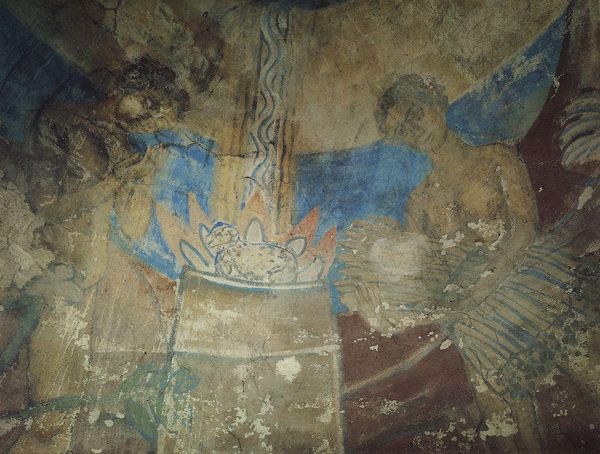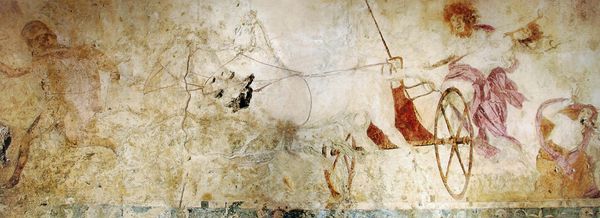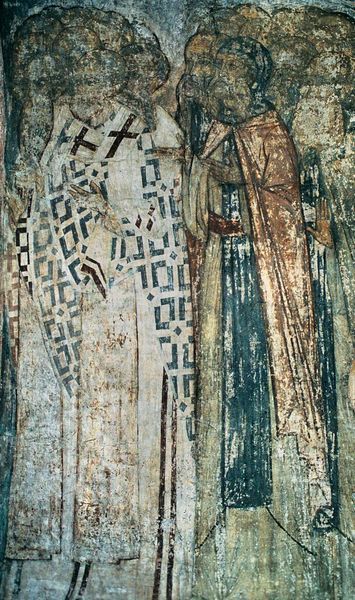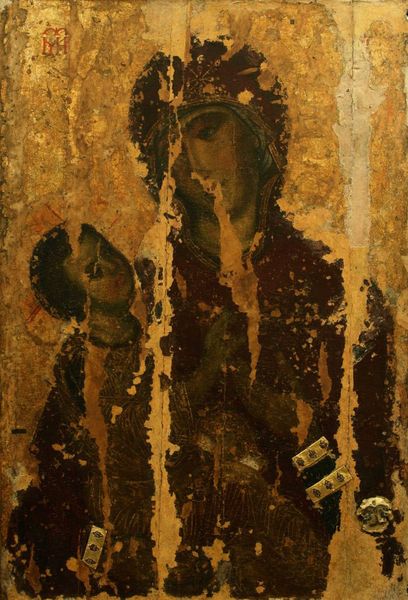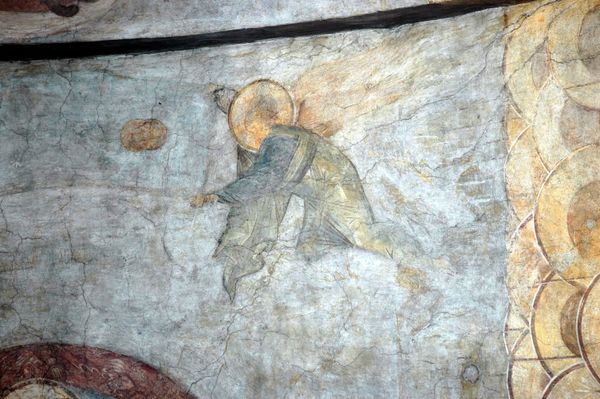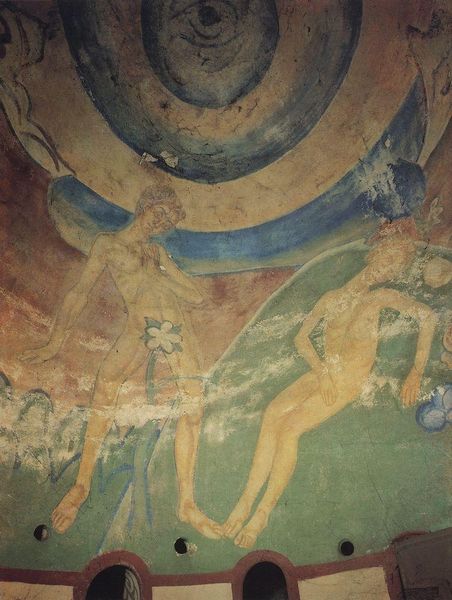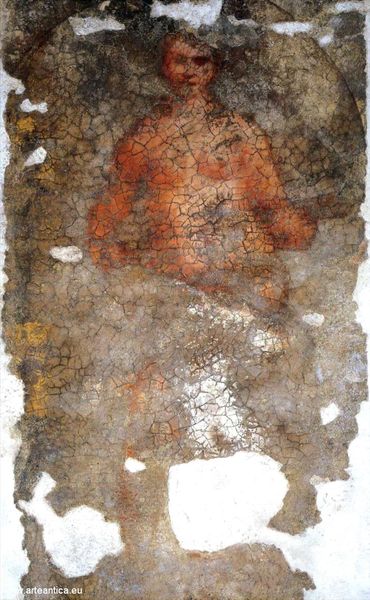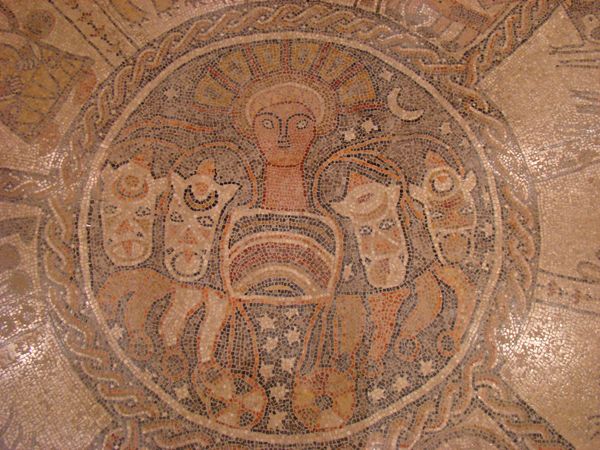
Fresco from the Tomb of Judgment in Ancient Mieza, Greece (Warrior) 200 BC
0:00
0:00
painting, fresco
#
portrait
#
painting
#
sculpture
#
textured
#
greek-and-roman-art
#
figuration
#
fresco
#
ancient-mediterranean
#
history-painting
Copyright: Public domain
Curator: Before us, we have a fresco fragment recovered from the Tomb of Judgement, in the ancient city of Mieza, Greece. Dating back to around 200 BC, it provides a glimpse into the funerary practices and artistic conventions of the time. Editor: My first impression is one of fragility. The cracks racing across the surface remind us of time's relentless march. And yet, even in its damaged state, there’s a striking boldness to the figure. Curator: Indeed. Though fragmented, we can discern the depiction of a warrior, rendered with broad strokes in red pigment. What visual cues tell you it is a warrior, in your reading? Editor: The simplified rendering, the red of the short chiton with a visible thorax suggesting muscles of power and perhaps a helmet suggested by the pigment. Red in that period also resonates with concepts of vitality and perhaps even, blood and sacrifice, very interesting when recovered from a tomb of all places! Curator: The use of red ochre, as you point out, holds symbolic weight. Beyond merely being an available pigment, red in funerary contexts frequently served as an apotropaic color warding off evil spirits and underscoring the vitality you describe to ensure the departed has safe passage into the afterlife. Frescoes like this provide a social record. Editor: I'm struck by how stylized the form is; almost an abstracted ideal rather than a portrait of a specific individual. And look at the patterned border—it brings order to what otherwise seems a raw, almost visceral depiction of this figure. The combination is incredibly potent. Curator: Its execution reflects both the constraints and the possibilities afforded to artists of that period. While we're trained today to think of "the artist," its helpful to recall that artistic expression in antiquity was closely tied to specific social roles, political patronage, and the demands of commemorative functions such as honoring this very warrior who appears to judge his underworld entrance. Editor: This single fresco fragment manages to compress life, death, hope, memory, and legacy into one compelling image. To think that it watched over centuries is profound. Curator: Absolutely. The Tomb of Judgement continues to shape our perception of the distant world of Mieza's societal norms.
Comments
No comments
Be the first to comment and join the conversation on the ultimate creative platform.
